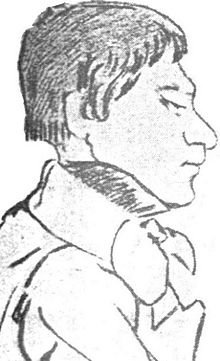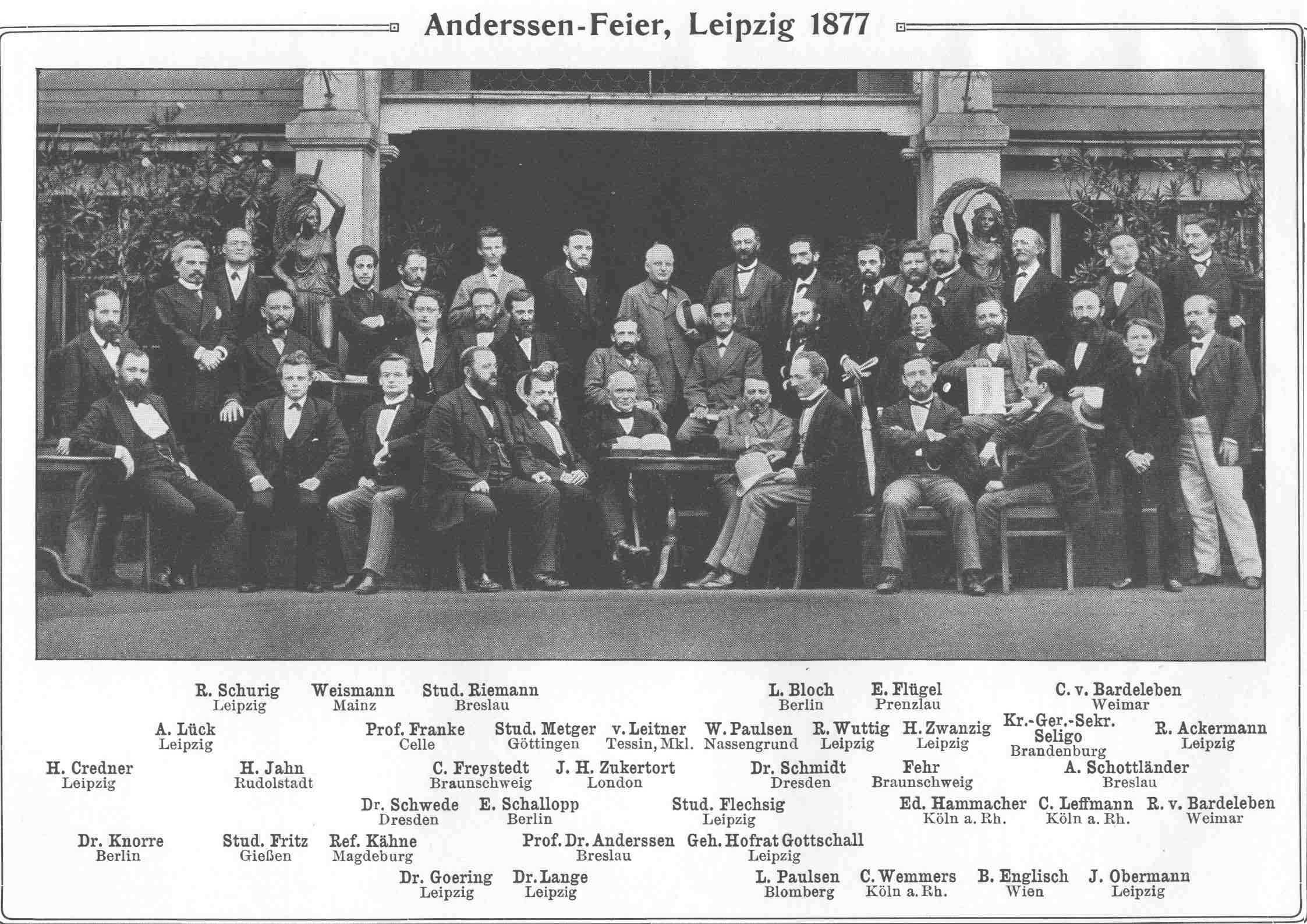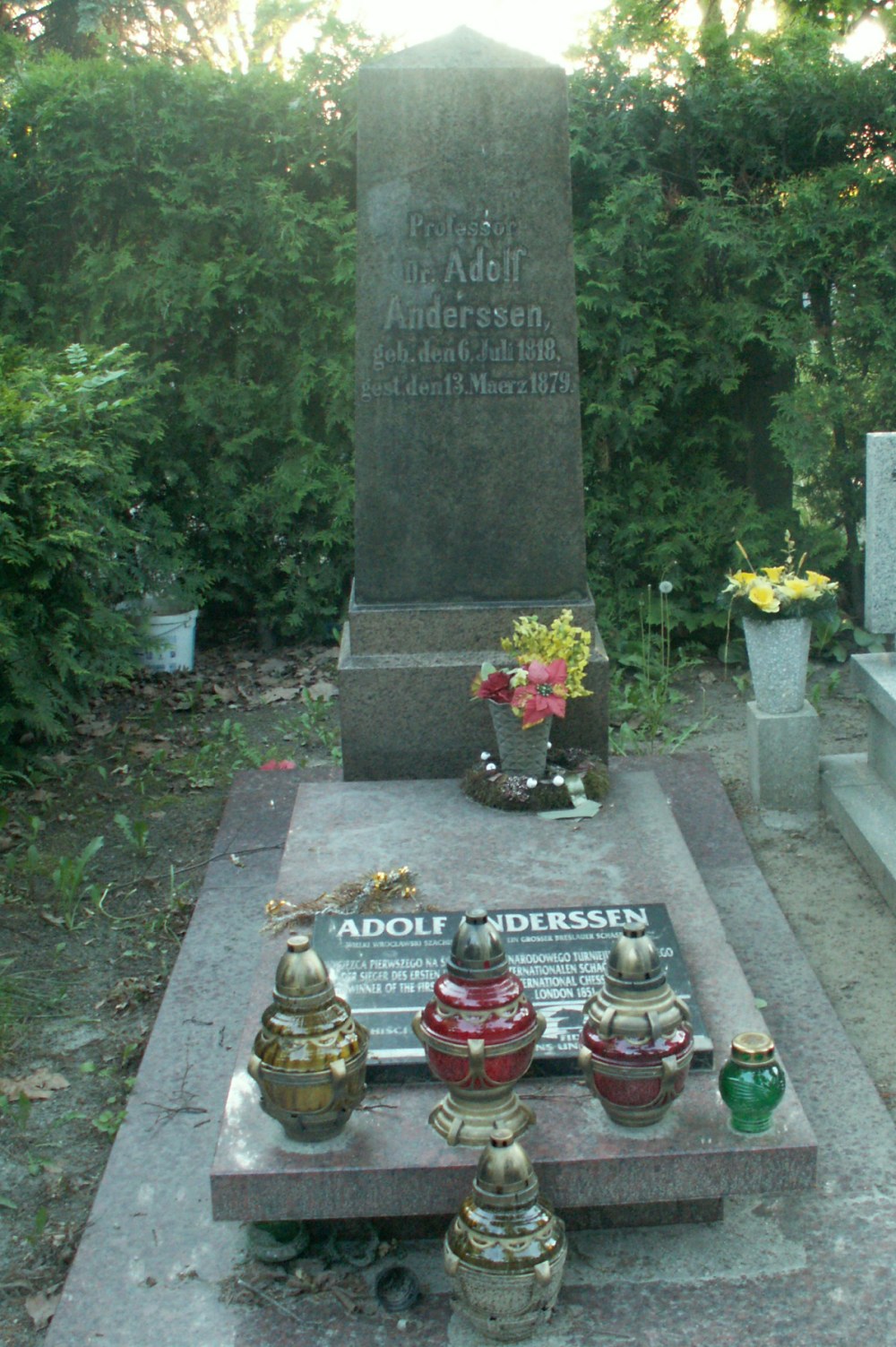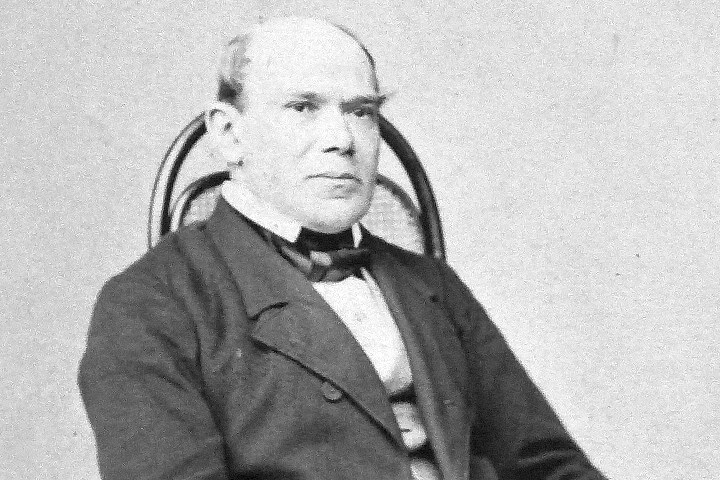An unofficial champion
Adolf Anderssen was the best chess player in the world after his victory at the London tournament of 1851 if not before then. Today one would say "world champion", but this term did not yet exist in his time.
Anderssen, actually named Karl Ernst Adolf Anderssen, was born in Breslau on July 6, 1818, just over 200 years ago. He learned the game of chess at the age of nine from his father, August Heinrich Anderssen, who was a merchant but seemed to have carried on other professions, including as a private tutor. For the most part, Anderssen taught himself the subtleties of the game as an autodidact with the help of the textbooks of Greco (in the translation by Moses Hirschel), Philidor and Allgaier. He developed a dashing attack style.
From 1830 to 1838 Anderssen attended the Elisabeth Gymnasium in Breslau. During his schooling, he collected chess problems, which he published in 1842 on 64 pages under the title "tasks for chess players and their solutions". In 1852 this was followed by a second heavily revised edition. The book caught the attention of Berlin chess masters, who later became known as the "Berliner Pleiades". Between 1845 and 1851 Anderssen played some matches against the Berlin champions Ludwig Bledow, Tassilo von Heydebrand und der Lasa and against Daniel Harrwitz in Breslau.
Anderssen studied mathematics and philosophy from 1838 to 1843, passed the teacher examination in 1845 and graduated in 1846 to his official probationary year at the Breslauer Friedrichs-Gymnasium, where he would go on to teach maths and German for many years. In the meantime, from 1849 to 1851, however, he took a position as a private tutor in Machmin (now Machowino in Northern Poland), Pomerania. In September 1851, Anderssen returned to the Friedrichs-Gymnasium. By now he had already achieved his first great success in chess.

London knockout 1851
When Howard Staunton invited the best chess players in Europe to a tournament on the sidelines of the London World Fair in 1851, Anderssen was sent to London as a representative of the Berlin Chess Society.
 The tournament took place in May 1851 in the knockout system and is considered the beginning of modern tournament chess. Staunton was regarded as a favorite for the tournament but he surprisingly lost the the semi-final against Anderssen. The champion from Breslau also defeated Marmaduke Wyvill in the final and thus won the tournament.
The tournament took place in May 1851 in the knockout system and is considered the beginning of modern tournament chess. Staunton was regarded as a favorite for the tournament but he surprisingly lost the the semi-final against Anderssen. The champion from Breslau also defeated Marmaduke Wyvill in the final and thus won the tournament.
The best known match on the occasion of the tournament was not played in the competition itself, but only later as a free game. It is one of the most famous chess games in history, Adolf Anderssen's King's Gambit against Lionel Kieseritzky (pictured). Anderssen, as White, sacrifices two rooks and the queen to give checkmate. This "Immortal Game" was not made known by Anderssen, but rather by his defeated opponent.
One of "50 games every chess player should know".
Anderssen Chess Festival
In August, Wrocław, as Breslau is now known, will host a chess festival including rapid and blitz tournaments named in Anderssen's honour, alongside a strong Wrocław Open from August 4th to 11th, 2019.
More info coming soon at chessinwroclaw.pl/en
Another brilliant achievement from Anderssen was against Jean Dufresne 1852 presumably in Berlin. Because of the great final combination Wilhelm Steinitz later characterized the game as "the evergreen in Anderssen’s wreath of laurel" and it therefore entered chess history as Anderssen's "Evergreen Game".
Annotations by Garry Kasparov
From 1853 to 1867 Anderssen rose from assistant teacher to second professor of the school. He was only able to participate in chess tournaments during the school holidays. Because of his vivid teaching and "rough" humor he was apparently quite popular among his students. On his 25th anniversary on staff in 1876, the students presented him with a splendid photo album.
When in 1858-59 the American Paul Morphy challenged the champions of the continent on his European tour, Anderssen — in contrast to Howard Staunton — took up the gauntlet in Paris and was decisively beaten 7:2 by the American. Anderssen recognized Morphy's superiority quite plainly. Morphy's career as the world's best chess player, however, lasted only a short time as he soon withdrew from the chess.
Learn about one of the greatest geniuses in the history of chess! Paul Morphy's career (1837-1884) lasted only a few years and yet he managed to defeat the best chess players of his time.
It is noticeable that Anderssen performed far better in his tournament appearances than in his matches. Between 1851 (London) and 1878 (Paris) Anderssen took part in 16 tournaments and won eleven of these. In his last tournament abroad in Paris in 1878, he scored his worst result, finishing in sixth place, but was already in poor health at the time. On the return journey from Paris to Breslau, Anderssen stopped in Frankfurt and played his last tournament at the 12th Chess Congress of the West German Chess Federation.
Over his career Adolf Anderssen came first or shared first in the following tournaments: London International 1851, tournament of the London Chess Club 1851, London International 1862, Aachen 1868 (together with Max Lange), 1869 Hamburg (together with Louis Paulsen), Barmen 1869, Baden-Baden 1870, Krefeld 1871 (together with von Minckwitz and Louis Paulsen), Leipzig 1871 (victory in the tie against Samuel Mieses), 1872 Altona, Leipzig 1876.
He also played 37 matches, his first in 1845 against Ludwig Bledow and his last 1877 against Louis Paulsen. But he won "only" 18 of these matches while losing no less than 13 – six were drawn.
In his retrospective calculation of world ranking, the statistician Jeff Sonas places Adolf Anderssen in the lead several times between 1861 and 1870, with the best (estimated) rating of "2744" Elo in 1870. This year Anderssen won the big tournament of Baden-Baden, one the strongest tournaments of that time.
Anderssen's most famous students include the unlucky Gustav Neumann and Johannes Zukertort, who later was defeated by Wilhelm Steinitz in the first official competition for the "world championship in chess".
Anderssen learned the game in 1827, it was on the occasion of the 50th anniversary of that event that the German Chess Federation was founded on the evening of July 18th, 1877 during the "Anderssen Celebration" in Leipzig. The founding members included the philosopher and chess player Carl Göring, the writer and chess player Rudolf von Gottschall, the organizers Hermann Zwanzig, Constantin Schwede and Eduard Hammacher and the master players Max Lange, Johannes Hermann Zukertort and Adolf Anderssen himself.
The latter articulated the motivation for the founding in his speech to the gathering:
"The main motive for this celebration was by no means just a mere ovation, but a different one. For years the idea of a general German Chess Federation has been floating in the air, so to speak — or at least in the healthy city air of Leipzig, because the first efforts to realize such an idea were made in Leipzig; and that is the only reason why the proposal to celebrate my jubilee found immediate approval because this celebration promised to effect a general meeting of all German chess contingents and raised hopes that the mere view of such an impressive spectacle would win friends and supporters for the intended enterprise, thus laying the foundation for the future unity of German chess. May this hope not come to nothing! Because nothing would be more advantageous for the rise of German chess than to end the previous fragmentation of the various forces and efforts, and I would consider myself lucky should I have been the innocent instigation of this creation so fruitful for chess."

(Click or tap to enlarge) Anderssenfeier, Leipzig 1877 | Photo: Ballo.de
Anderssen died of a heart attack less than two years later, on March 13th, 1879, at the age of sixty. He was buried in the St. Mary Magdalene in Breslau. However, as a result of bombing during the Second World War, his grave was badly damaged. In 1957, Polish chess fans relocated Anderssen's remains to Osobowicki Cemetery.

Anderssen's grave at the "Avenue of the deserved" | Photo: Shaaze CC BY 3.0 via Wikimedia Commons
Translation from German: Macauley Peterson and Johannes Fischer
Links



















 The tournament took place in May 1851 in the knockout system and is considered the beginning of modern tournament chess. Staunton was regarded as a favorite for the tournament but he surprisingly lost the the semi-final against Anderssen. The champion from Breslau also defeated Marmaduke Wyvill in the final and thus won the tournament.
The tournament took place in May 1851 in the knockout system and is considered the beginning of modern tournament chess. Staunton was regarded as a favorite for the tournament but he surprisingly lost the the semi-final against Anderssen. The champion from Breslau also defeated Marmaduke Wyvill in the final and thus won the tournament.






